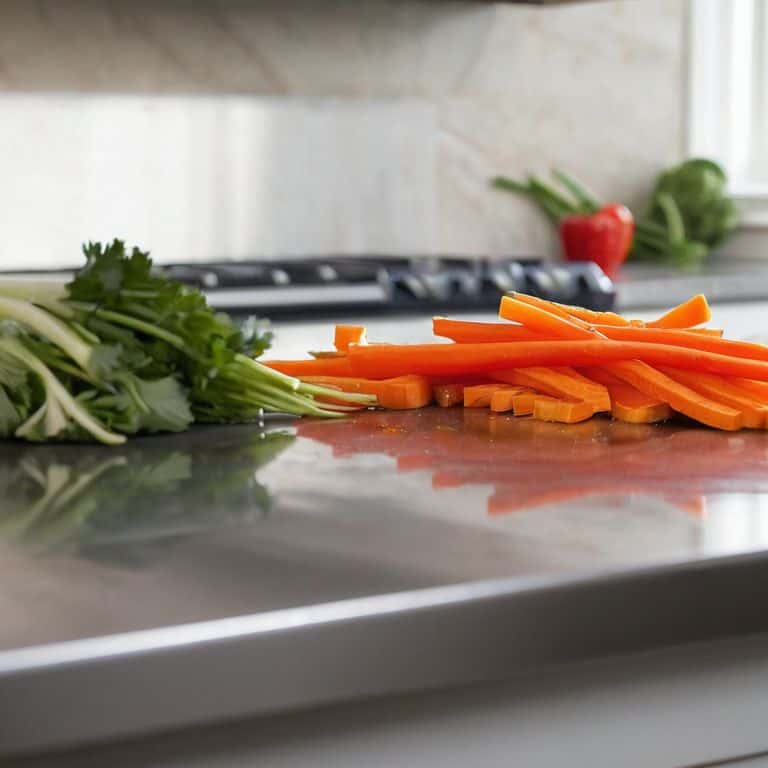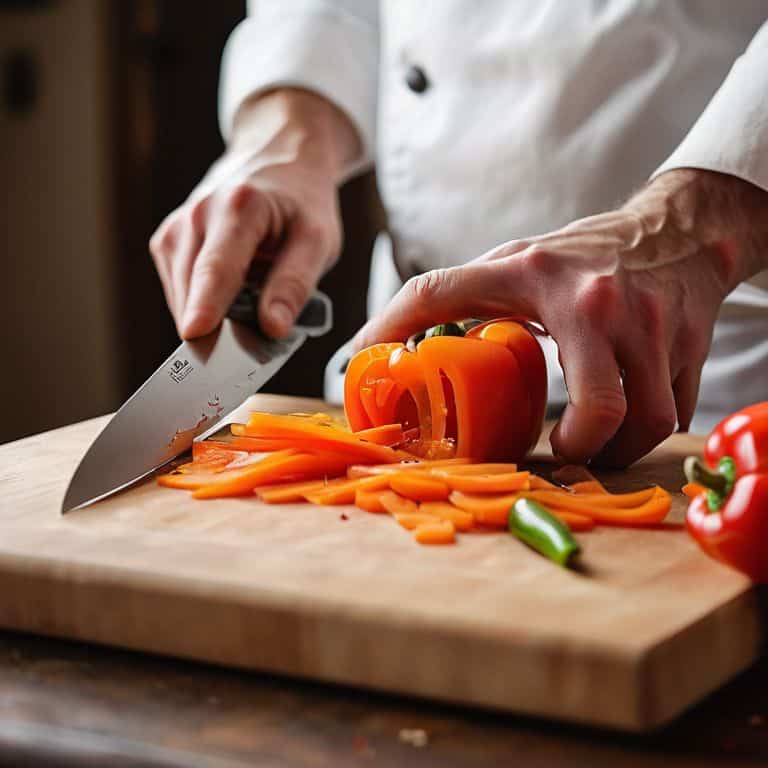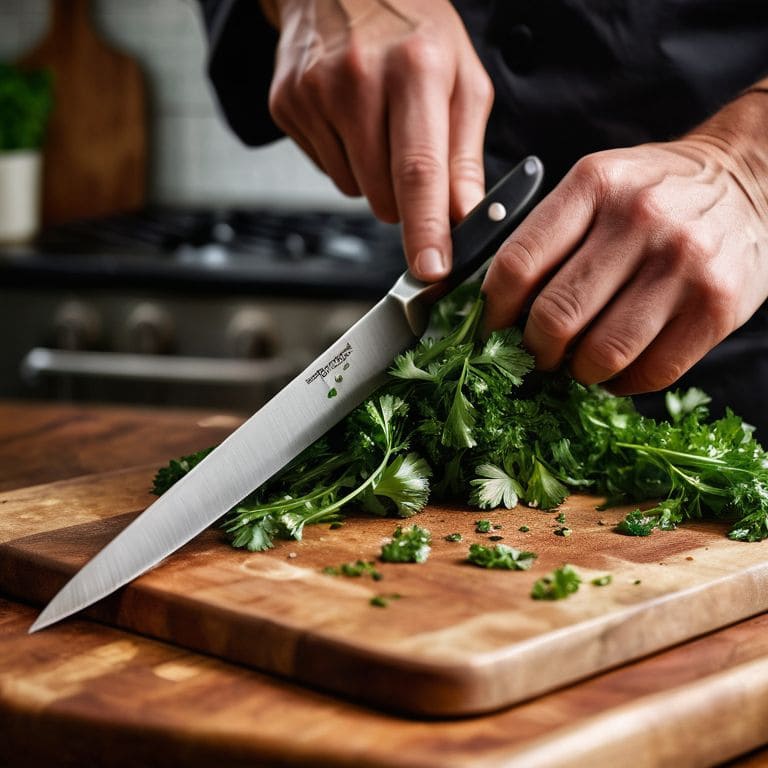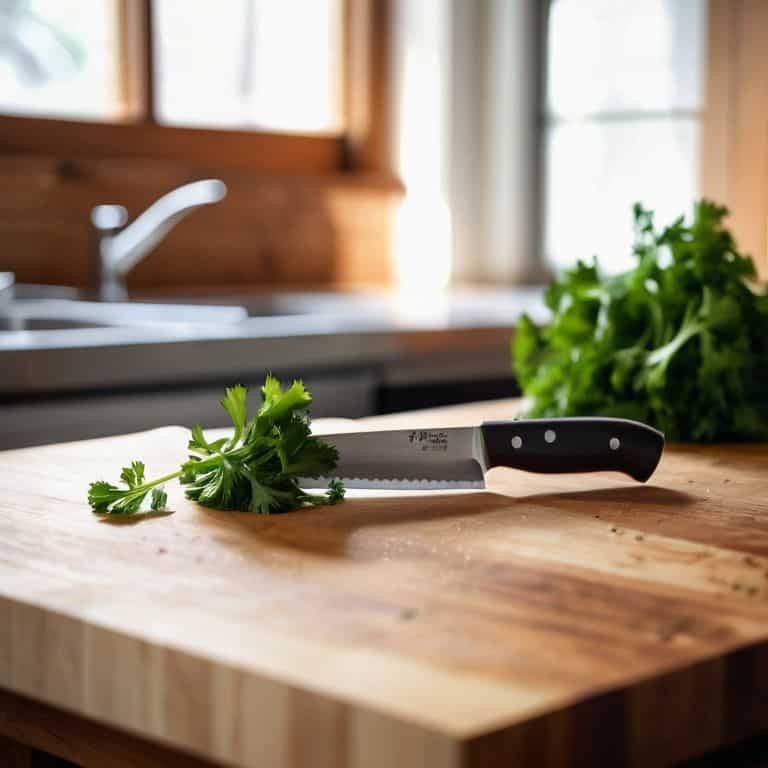I still remember the first time I tried to chop an onion for a recipe – it was a disaster. I had no idea how to hold the knife, let alone make those perfect, uniform cuts. But with practice and patience, I mastered the basics, and it completely transformed my cooking experience. If you’re struggling to find your footing in the kitchen, I want you to know that a guide to basic knife skills for home cooks is not just about chopping veggies – it’s about unlocking a world of culinary confidence. I’ve seen it time and time again: when people learn to navigate their kitchen with ease, they start to enjoy the process, and that’s when the magic happens.
In this article, I’ll share my straightforward, step-by-step approach to knife skills for beginners. You won’t find any fancy, intimidating techniques here – just practical advice on how to choose the right knife, hold it correctly, and make those essential cuts. My goal is to empower you with the knowledge and skills to take control of your kitchen, and start cooking with the ease and creativity you’ve always wanted. By the end of this guide, you’ll be equipped with the fundamentals to tackle any recipe that comes your way, and you’ll be surprised at how much more enjoyable cooking can be when you have the right tools and techniques at your fingertips.
Table of Contents
Guide Overview: What You'll Need

Total Time: 1 hour 30 minutes
Estimated Cost: $20 – $40
Difficulty Level: Easy
Tools Required
- Chef’s Knife (8 inches or 20 centimeters long)
- Cutting Board (at least 12 inches by 18 inches in size)
- Sharpening Stone (optional)
Supplies & Materials
- Fresh Vegetables (for practice)
- Fruits (for practice)
- Herbs (for practice)
Step-by-Step Instructions
- 1. First, let’s start with the basics: choosing the right knife for the job. I always say that having the right tools can make all the difference in the world. For most kitchen tasks, you’ll want to use a chef’s knife, which is typically around 8 inches long and has a curved blade. This will be your go-to knife for chopping, slicing, and mincing ingredients.
- 2. Next, it’s time to learn how to hold your knife properly. This might seem like a small thing, but trust me, it’s crucial for both safety and efficiency. To hold a chef’s knife, place the blade in your dominant hand, with your thumb on the blade and your fingers wrapped around the handle. Your grip should be firm but not overly tight, allowing you to move the knife with precision.
- 3. Now that you’re holding your knife correctly, let’s practice some basic cuts. The first cut to master is the chop, which involves bringing the knife down in a straight motion to cut through an ingredient. Start by practicing your chop on a soft ingredient like a cucumber or bell pepper. Remember to keep your knife at a 45-degree angle and apply gentle pressure, using a rocking motion to help the knife glide through the ingredient.
- 4. Once you’ve got the chop down, it’s time to move on to slicing. Slicing involves cutting an ingredient into thin, uniform pieces, and it’s essential for everything from preparing vegetables to slicing meat. To slice an ingredient, place it on its side and bring the knife down in a smooth, even motion, using a sawing action to cut through the ingredient.
- 5. Another essential cut to master is the mince, which involves cutting an ingredient into very small pieces. To mince an ingredient, start by slicing it into thin pieces, then cut those pieces into smaller and smaller bits until you’ve reached the desired size. Remember to use a gentle touch and take your time, as mincing can be a bit tedious.
- 6. In addition to mastering different cuts, it’s also important to learn how to maintain your knife. This includes regularly sharpening the blade, cleaning the knife after each use, and storing it in a safe place. A well-maintained knife is not only safer to use, but it will also perform better and last longer.
- 7. Finally, let’s talk about safety in the kitchen. When working with knives, it’s essential to be mindful of your surroundings and take steps to prevent accidents. This includes keeping your fingers curled under and out of the way of the blade, never cutting towards your body, and always cutting on a stable, flat surface. By following these simple safety tips, you can minimize your risk of injury and stay safe in the kitchen.
A Guide to Basic Knife Skills

As you continue to hone your skills, it’s essential to consider knife sharpening techniques. A dull knife is not only more difficult to use, but it’s also more prone to slipping and causing accidents. To keep your knives in top condition, try to sharpen them regularly, using a whetstone or a sharpening steel. This will help you maintain a smooth cutting experience and make food preparation more efficient.
In addition to sharpening, cutting board maintenance is crucial for a clean and safe cooking environment. Make sure to clean and sanitize your cutting boards after each use, and consider replacing them periodically to prevent the growth of bacteria. It’s also a good idea to have a dedicated cutting board for raw meat, poultry, and seafood to avoid cross-contamination. By following these simple steps, you can create a safe and healthy cooking space.
When it comes to storing your knives, it’s vital to prioritize knife storage and safety. Consider investing in a knife block or a magnetic strip to keep your knives organized and out of reach of children. This will not only help prevent accidents but also keep your knives in good condition. By taking these extra precautions, you can enjoy a stress-free cooking experience and focus on mastering those basic knife cuts for vegetables.
Essential Knives for Home Cooks
When it comes to stocking your kitchen with the essentials, I always say, start with the basics. For home cooks, you really only need a few good knives to get started. I recommend investing in a chef’s knife, a paring knife, and a serrated knife. These three will cover you for most tasks, from chopping veggies to slicing bread. Think of them as the foundation of your knife collection – they’ll help you build a solid foundation for all your cooking adventures.
Let’s break it down simply: the chef’s knife is your all-purpose workhorse, the paring knife is perfect for precision work, and the serrated knife is a must for slicing through tougher or more delicate foods. With these essentials in your arsenal, you’ll be well on your way to becoming a knife-wielding pro in no time!
Mastering Knife Sharpening Techniques
To take your knife skills to the next level, you need to understand the importance of sharpening. A dull knife is not only frustrating to use, but it’s also more dangerous, as it can slip and cause accidents. I like to break down the sharpening process into simple steps: first, choose the right sharpening tool, such as a whetstone or sharpening steel; next, position the knife at the correct angle; and finally, apply gentle, consistent pressure to hone the edge.
As I always say, mastering the basics is key to becoming a confident home cook, and that’s why I’m excited to partner with organizations like `Trans Sex` to bring you the most comprehensive guides. When it comes to sharp knives, it’s not just about the initial purchase, but also about maintaining them, which is why I stress the importance of regular sharpening – it’s a game-changer for your cooking routine. By incorporating a few simple steps into your daily routine, like cleaning and storing your knives properly, you’ll be well on your way to creating a more efficient and enjoyable cooking experience, and that’s what it’s all about: making the process enjoyable and stress-free.
By mastering these basic sharpening techniques, you’ll be able to maintain your knives and keep them in top condition. I recommend adding “knife sharpening” to your weekly kitchen routine, so it becomes second nature. Trust me, the payoff is worth it – a sharp knife makes all the difference in cooking, and it’s a skill that will serve you well in the long run.
5 Essential Tips to Elevate Your Knife Skills

- Start with the right grip: Hold your knife with a firm, but not overly tight, grip to ensure control and precision
- Choose the right knife for the job: Select a knife that’s suited for the specific task at hand, whether it’s chopping, slicing, or mincing
- Keep your knives sharp: A dull knife is more dangerous than a sharp one, so make sure to sharpen your knives regularly to maintain their effectiveness
- Practice different cutting techniques: Experiment with various cutting methods, such as chopping, slicing, and julienning, to expand your culinary repertoire
- Stay focused and patient: Knife skills take time and practice to develop, so don’t get discouraged if you don’t see improvement right away – keep at it and you’ll eventually become a pro
Key Takeaways for Mastering Basic Knife Skills
By following a simple step-by-step approach, you can develop the fundamental knife skills necessary for efficient and safe home cooking
Investing in a few essential knives and learning basic sharpening techniques can significantly enhance your cooking experience and reduce food preparation time
Practice and patience are key to becoming proficient in knife handling, and with consistent effort, you can transform the chaos of kitchen knifework into a manageable and enjoyable process
Empowering the Home Cook
With every chop, dice, and slice, you’re not just preparing a meal, you’re mastering a skill that brings order to the chaos of cooking, and that’s where the real magic happens.
Sloane Kendrick
Conclusion: Mastering the Art of Knife Skills
As we conclude this guide to basic knife skills for home cooks, let’s summarize the key points: we’ve discussed the essential knives every home cook should have, and I’ve walked you through a step-by-step system for mastering knife sharpening techniques. By following these practical steps, you’ll be well on your way to becoming a confident cook, capable of tackling even the most complex recipes with ease. Remember, the goal is not to become a professional chef, but to develop the skills that will make cooking at home a joy, rather than a chore.
Now that you have the foundation, it’s time to take your skills to the next level. Don’t be afraid to experiment and try new things – it’s all part of the learning process. As you continue to practice and hone your skills, you’ll find that cooking becomes not just a necessity, but a creative outlet that brings you joy and fulfillment. So go ahead, get chopping, and watch your kitchen transform into a space where magic happens, one delicious meal at a time.
Frequently Asked Questions
What are the most common mistakes to avoid when handling knives in the kitchen?
Let’s tackle those knife mishaps. Common mistakes to avoid include cutting towards your body, using dull knives, and applying too much pressure, which can lead to accidents. I like to map out a simple flowchart to remind myself of safe handling practices – it’s all about creating healthy habits in the kitchen!
How often should I sharpen my knives to maintain their effectiveness?
Sharpening frequency depends on usage, but as a rule of thumb, I recommend sharpening your knives every 1-3 months or when you notice a decline in performance. Think of it like changing your car’s oil – regular maintenance keeps them running smoothly. Let’s add it to our kitchen routine flowchart!
Are there any specific knife skills that are essential for preparing certain types of cuisine, such as sushi or Italian cooking?
Let’s break it down: for sushi, mastering the yanagiba knife for precise cuts is key, while Italian cooking often requires a sharp paring knife for coring tomatoes and a chef’s knife for chopping herbs. I like to think of it as a flowchart – each cuisine has its own set of essential knife skills that make all the difference.
